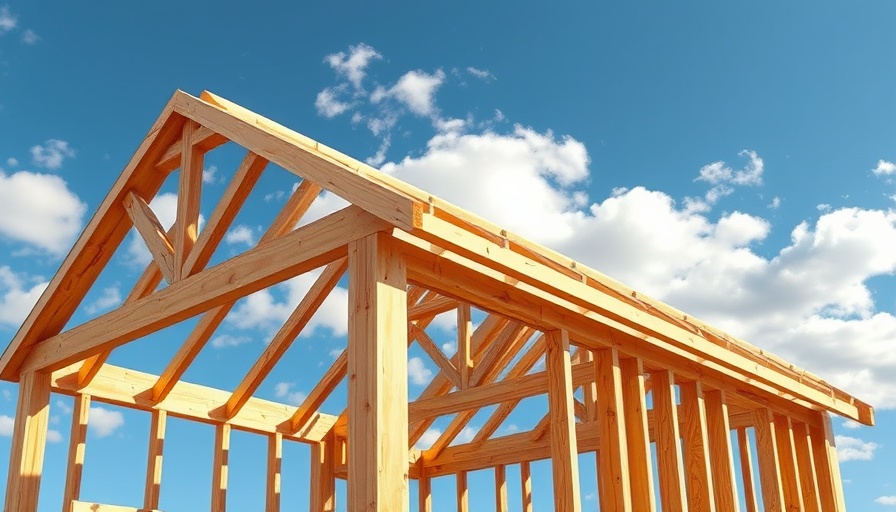
The Fall of Housing Starts: A Key Insight for Investors
In a concerning trend for the real estate market, housing starts in the United States have dropped a staggering 10% in May, reaching their lowest level since 2020. This decline, reported by the U.S. Census Bureau and the Department of Housing and Urban Development (HUD), reflects a broader stagnation rather than recovery in new residential construction.
Privately owned housing starts fell to a seasonally adjusted rate of 1,256,000, a significant decrease from April's rate of 1,316,000. While single-family housing starts managed a slight increase of 0.4%, multifamily projects took a more substantial dip, falling to 316,000 starts from 371,000. According to Odeta Kushi, Deputy Chief Economist at First American, the drop is largely due to a notable decline in the volatile multi-family sector, which signals a weak trend for the future.
Understanding Builder Pessimism and Its Implications
The shrinking numbers are compounded by growing pessimism among builders. This sentiment is echoed in the recent National Association of Home Builders (NAHB) Housing Market Index, which indicates that builder confidence has hit one of its lowest levels in over a decade. The index’s drop reflects a downturn in outlook regarding future single-family sales and current sales conditions, marking the weakest levels since June 2012.
As completions offer a slight silver lining—up 5.4% from the previous month—they are still down 2.2% year-over-year, highlighting the sharp contrast between current production and new sales. One must question how these dynamics will affect potential investors looking to navigate the turbulent waters of the housing market.
Future Projections: Rethinking Investment Strategies
With building permits also dropping 2% month-over-month, looking ahead becomes crucial for real estate investors. The downward trend in permits suggests that construction activity may not ramp up quickly, reflecting a potential slowdown in housing supply. If this downward trajectory continues, prices for existing homes could see upward pressure as supply tightens against sustained buyer demand. Investors should remain vigilant and consider strategic investment approaches that align with these emerging market realities.
As the market evolves, proactive investors will not only adapt but also capitalize on emerging opportunities. With the likelihood of changes in pricing dynamics, savvy investors can position themselves to thrive in this fluctuating landscape.
Take Charge of Your Investment Journey
In these unpredictable times, how can you refine your investment strategies? Understanding market trends is key. Don’t let uncertainty hold you back. Learn how to invest smarter—get free info with no obligation, backed by nationwide support. This knowledge could be your ticket to making more informed decisions as the real estate market shifts.
 Add Row
Add Row  Add
Add 




Write A Comment